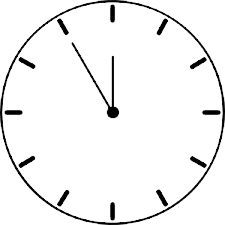Timer resolution might seem like a technical detail buried deep within the workings of computers, but its impact on performance is significant. In this article, we’ll delve into why timer resolution is important, its effects on system efficiency, and how optimizing it can enhance user experience and overall productivity.
Timer resolution, often overlooked in the realm of computing, holds profound significance in shaping the efficiency and performance of systems. It dictates the granularity with which a system can measure time intervals and execute tasks, exerting a pervasive influence on various aspects of computing functionality.
Table of Contents
Understanding Timer Resolution
Timer resolution refers to the smallest unit of time a system can measure or track. In simpler terms, it dictates how frequently a system updates its internal clock and performs tasks. A higher timer resolution means the system can handle tasks with greater precision, while a lower resolution may result in less accurate timekeeping and performance issues.
Impact on System Performance
Timer resolution directly affects various aspects of system performance, including responsiveness, multitasking capabilities, and overall efficiency. When the timer resolution is low, tasks may take longer to execute, leading to delays in response times and reduced system performance. This can be particularly noticeable in tasks requiring real-time processing, such as gaming, video editing, and audio production.
Effects on Application Performance
Many applications rely on precise timing for their operations. For instance, multimedia software, scientific simulations, and financial applications often require high timer resolution to maintain accuracy and consistency. When timer resolution is compromised, these applications may experience lags, stuttering, or synchronization issues, negatively impacting user experience and productivity.
Importance in Gaming
In the gaming world, timer resolution plays a crucial role in ensuring smooth gameplay and optimal performance. A high timer resolution minimizes input lag, synchronizes frame rates, and enhances overall responsiveness, providing gamers with a more immersive experience. Additionally, competitive gaming relies heavily on precise timing for actions and reactions, making timer resolution optimization essential for gaining a competitive edge.
Understanding the timeGetTime Function
The timeGetTime function, distinct from GetTickCount, serves to retrieve the current time, updated by the timer interrupt. Historically, CPUs have struggled with maintaining precise time due to intentional clock fluctuations aimed at preventing FM transmissions and other considerations. To ensure accuracy, separate clock chips are often employed. However, reading from these chips incurs significant overhead. To mitigate this, Windows maintains a 64-bit counter of time, measured in milliseconds, updated by the timer interrupt. This counter is stored in shared memory, allowing any process to efficiently access the current time without direct interaction with the timer chip. Fundamentally, timeGetTime calls ReadInterruptTick, which essentially reads this 64-bit counter. Consequently, by monitoring this counter, we can ascertain the frequency of the timer interrupt.
Impact on Battery Life
Timer resolution can also influence the power consumption of devices, particularly in portable devices like laptops and smartphones. Higher timer resolution often requires more frequent system wake-ups, leading to increased CPU utilization and consequently higher energy consumption. By optimizing timer resolution, device manufacturers can extend battery life without sacrificing performance.
Strategies for Optimizing Timer Resolution
Fortunately, there are several strategies for optimizing timer resolution to maximize system performance and efficiency. One approach is to adjust the timer resolution settings in the operating system or BIOS to strike a balance between accuracy and resource utilization. Additionally, developers can optimize their code to minimize reliance on high timer resolution, employing techniques such as batch processing and asynchronous operations.
Tools for Monitoring and Adjusting Timer Resolution
Several tools are available for monitoring and adjusting timer resolution, allowing users to fine-tune their systems for optimal performance. These tools provide real-time insights into timer resolution settings and their impact on system performance, enabling users to make informed decisions when optimizing their systems.
Conclusion
Timer resolution plays a critical role in determining system performance and efficiency across various applications and use cases. By understanding its importance and implementing optimization strategies, users can unlock the full potential of their systems, enjoying smoother operation, improved responsiveness, and enhanced productivity. Whether you’re a gamer, a multimedia enthusiast, or a professional user, paying attention to timer resolution can make a significant difference in your computing experience.
